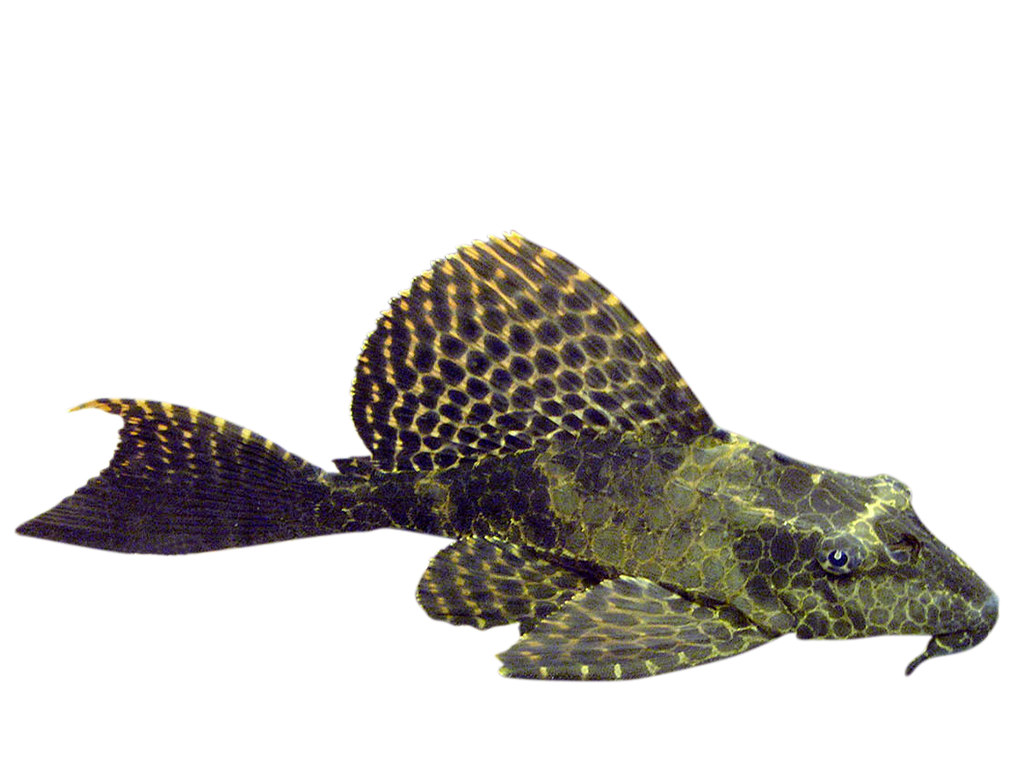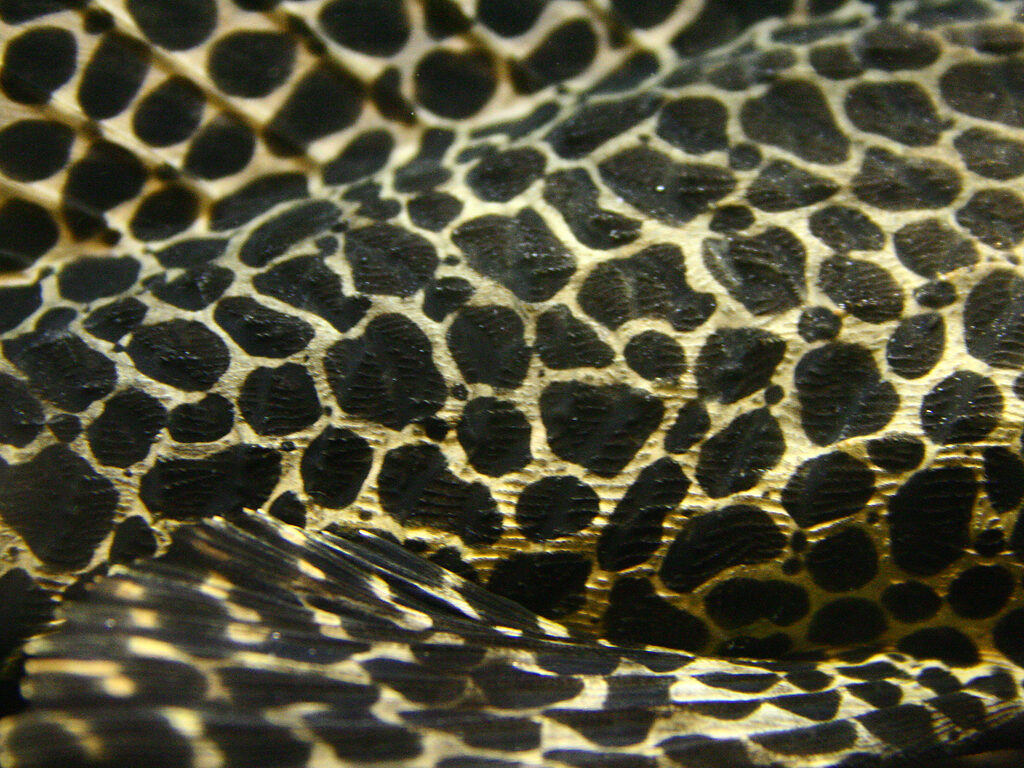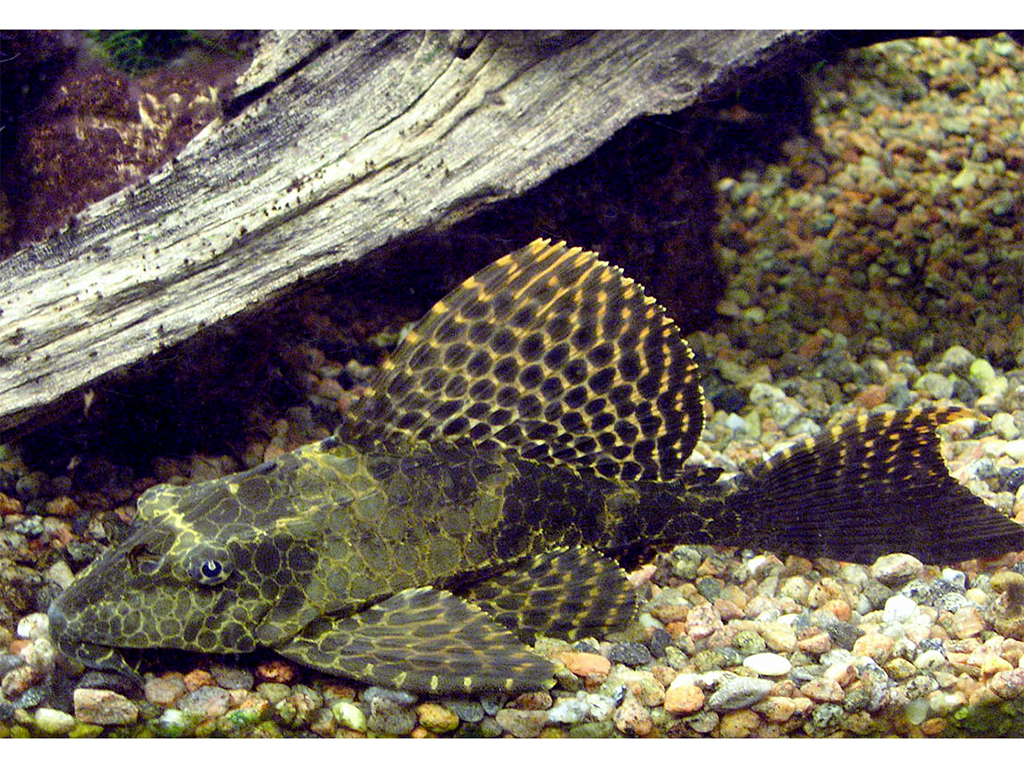Leopard Pleco
Pterygoplichthys gibbiceps

Bony plates instead of scales
The leopard pleco inhabits slow-moving freshwater rivers. The mouth of the fish, like that of other catfish, is adapted to be able to attach to the substrate through suction and to harvest the vegetation for food. The species lives in shoals. The leopard pleco has a beautiful pattern that looks a bit like honeycomb! Instead of scales, the skin of the leopard pleco is covered with hard bony plates. They are nocturnal animals that are usually completely inactive and hidden during the day.

Photo: Brynja-Eldon-CC-BY-NC-SA
Hibernates during the dry season
The leopard pleco inhabits the river systems and flooded areas of the rainforest. When it’s dry season and the water recedes, they can dig burrows in the muddy ground and hibernate until the rainy season returns. The leopard plecos also tend to lay their eggs in burrows. The male builds metre-long caves at the roots in the bottom clay, where he then courts the female. After mating, the female lays her 150 or so eggs in this area. The parents guard the eggs and fry carefully.

Photo: Soulkeeper-CC-BY-SA
Distribution worldwide
The Amazon River
and its tributaries.
White marking = Distribution

Threat based on the Red List

Trade regulations
CITES: Not listed.